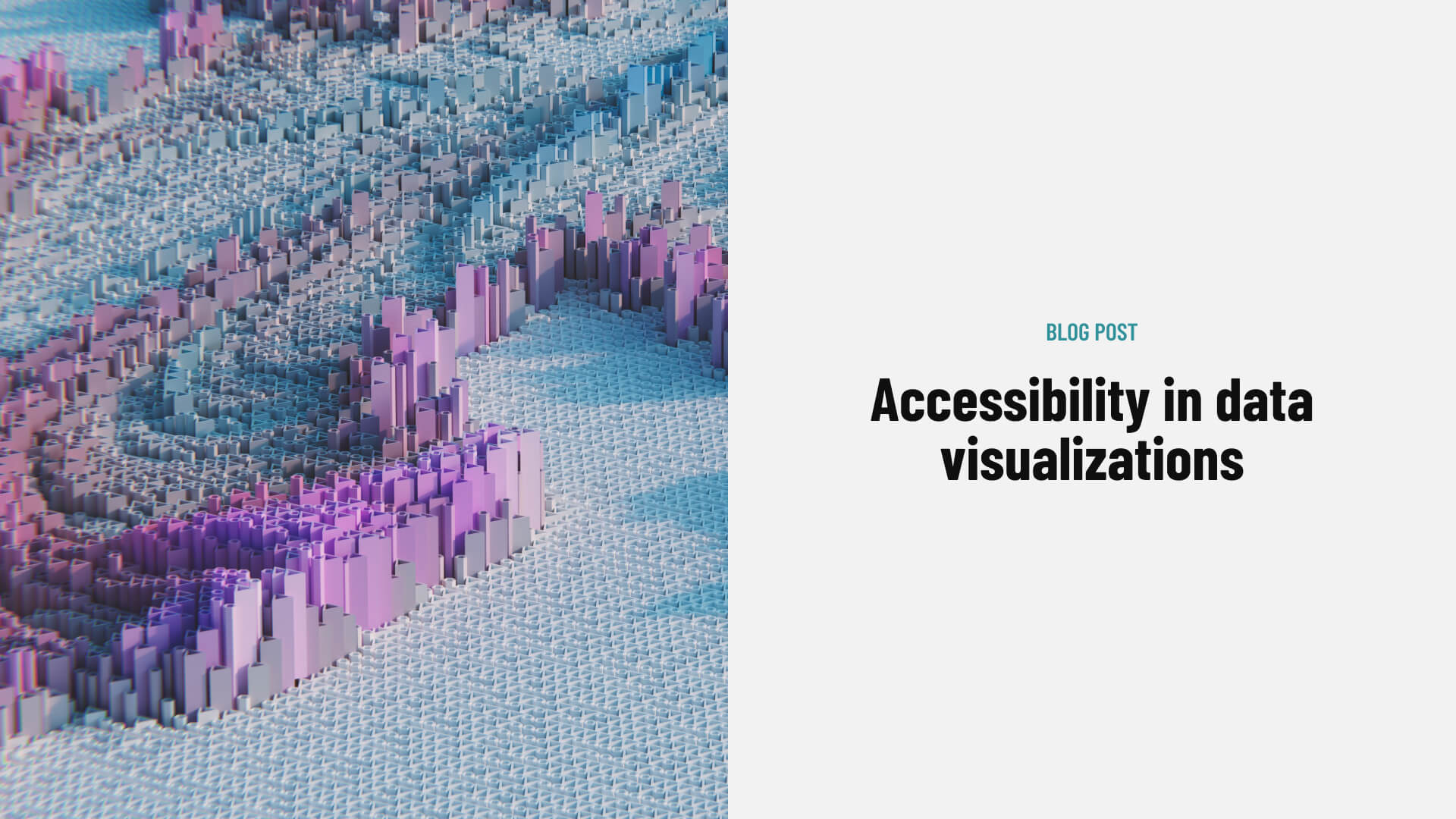Creating inclusive data visualizations: Best practices for accessibility
Today I would like to talk about accessibility and data visualizations. Accessibility in data visualizations is an important and evolving topic. Here are some points on the issue of data visualizations not being accessible to screen reader users and potential solutions within the accessibility community I would like to address:
- Lack of Semantic Structure: Many data visualizations, especially those created for the web, do not use proper semantic HTML elements. This makes it difficult for screen readers to interpret and convey the information effectively. Semantic elements like headings, lists, and tables should be used appropriately to give structure to the data.
- Missing Alternative Text: One common issue is the absence of alternative text (alt text) for images and charts within data visualizations. Screen readers rely on alt text to describe images, so not providing it can leave users with disabilities in the dark.
- Complexity of Visuals: Some data visualizations are inherently complex, making it challenging to provide equivalent information in a textual format. This is an ongoing challenge in the accessibility community, and innovative solutions are needed to convey the same insights effectively.
- Table Versions: Creating table versions of data visualizations can be a helpful solution. This involves presenting the same data in a structured tabular format alongside the visualization. This allows screen reader users to access the information in a more understandable way.
- Interactive Features: Many data visualizations are interactive, allowing users to explore the data by hovering or clicking. For accessibility, it’s crucial to provide non-visual ways for users to interact, such as keyboard shortcuts or screen reader-friendly descriptions of interactive elements.
- PDF Accessibility: Data visualizations embedded in PDFs can pose even greater accessibility challenges. PDFs should be tagged and structured properly to ensure screen reader compatibility. Tools like Adobe Acrobat Pro offer features for enhancing PDF accessibility.
- Community Efforts: The accessibility community is actively working to address these challenges. This includes developing guidelines, best practices, and tools specifically for making data visualizations more accessible.
- Accessible Data Visualization Tools: Some data visualization tools are starting to include built-in accessibility features. For example, charting libraries and software like Tableau are improving their accessibility support, making it easier for creators to produce accessible visuals.
- Education and Awareness: Raising awareness about the importance of accessible data visualization is crucial. Many designers and developers may not be fully aware of the impact of their work on users with disabilities. Educational initiatives can help bridge this knowledge gap.
- User Feedback: Involving users with disabilities in the design and testing of data visualizations is invaluable. Their feedback can highlight issues that might not be apparent to creators and lead to more accessible designs.
- Legal and Compliance Requirements: In some regions, there are legal requirements for accessibility, such as the Americans with Disabilities Act (ADA) in the United States. Organizations need to be aware of these regulations and ensure their data visualizations comply.
In summary, the accessibility community is actively working on addressing the challenges posed by inaccessible data visualizations. Solutions include better design practices, alternative formats, improved tools, and increased awareness of accessibility issues. Collaboration between designers, developers, and users with disabilities is essential in creating more inclusive data visualization experiences.

